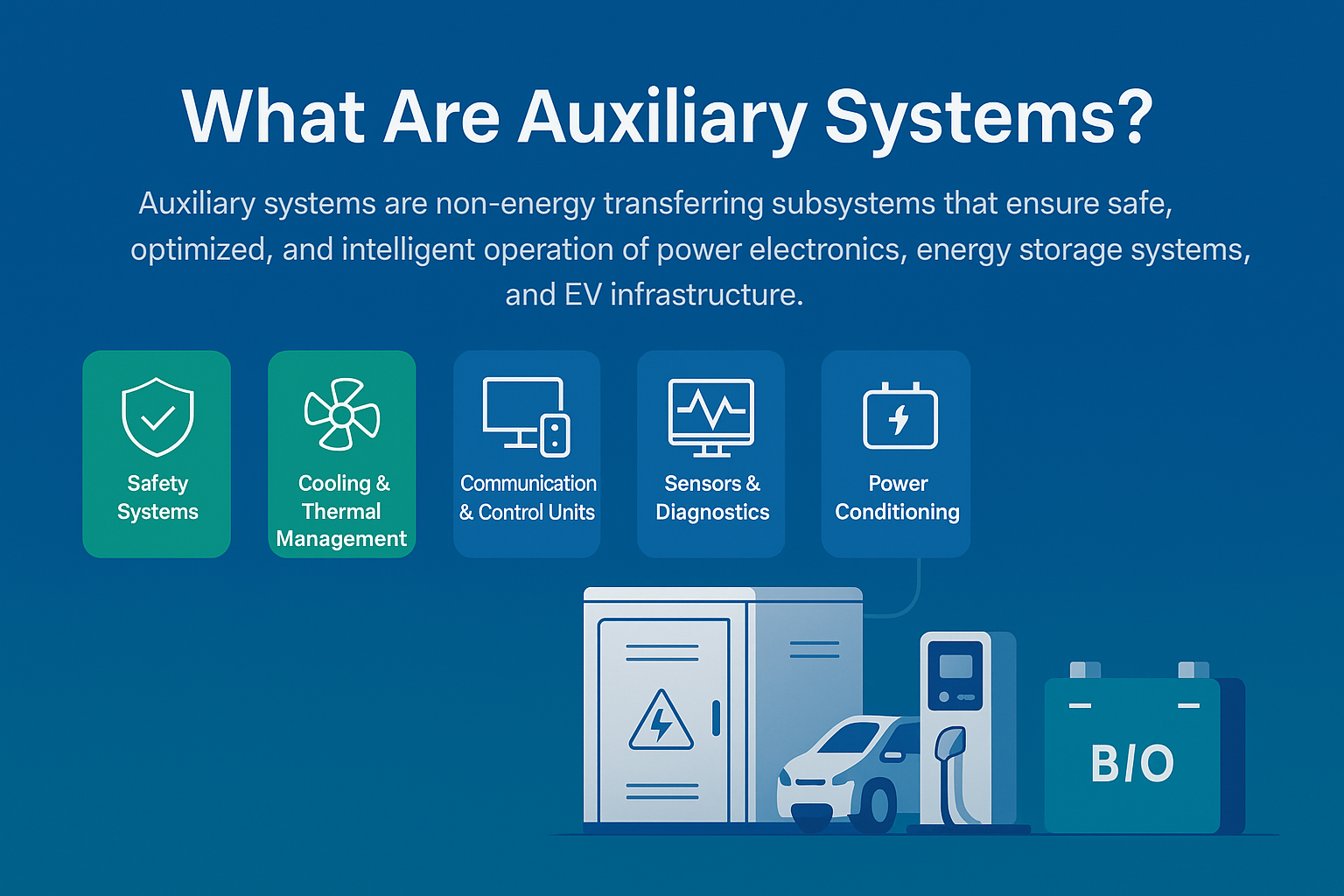What are Auxiliary Systems?

Auxiliary systems are the non-energy transferring subsystems that ensure safe, optimized, and intelligent operation of power electronics, energy storage systems, and EV infrastructure.
These include:
- Safety Systems
- Cooling & Thermal Management
- Communication & Control Units
- Sensors & Diagnostics
- Power Conditioning
Bess(link bess wiki) with Auxiliary system.
How Auxiliary Systems Work
🛠️ Callout: The Systems Behind the System
They don’t generate power, store energy, or move electrons—but without them, nothing runs.
Auxiliary systems are the silent architects of reliability—managing heat, detecting faults, suppressing fires, and orchestrating control.
In every substation, charger, or BESS, they are the hidden infrastructure that ensures safety, intelligence, and uptime.
- Sensors & Monitoring: Real-time tracking of voltage, current, cell temperature, and vibration.
- Control Interfaces: PLCs, HMIs, and relays automate switching, isolation, and alert logic.
- Cooling Systems: Fans, liquid cooling circuits, or air conditioning regulate thermal envelope.
- Fire & Fault Safety: Smoke detectors, thermal cameras, and suppression agents prevent battery fires or arc faults.
- Remote Connectivity: LTE, Ethernet, RS485 protocols enable EMS, BMS, and cloud dashboards to monitor performance and push OTA updates.



